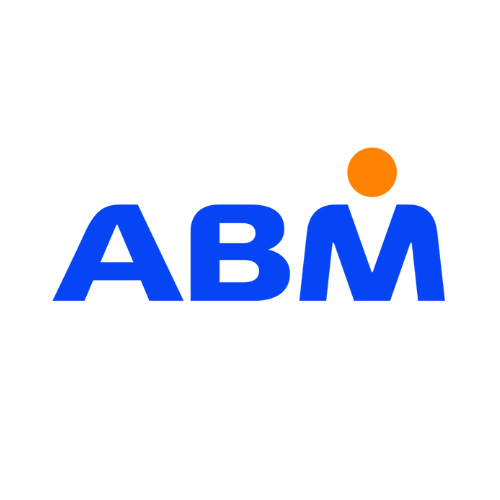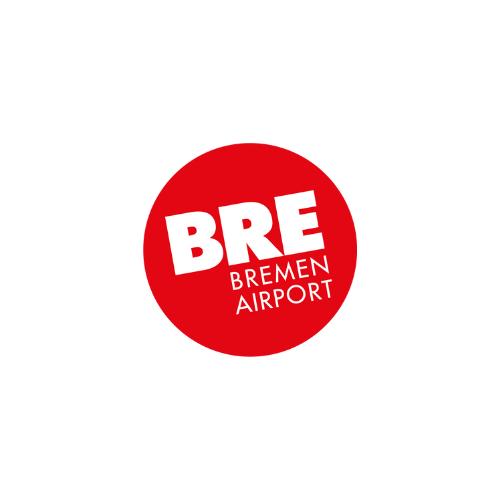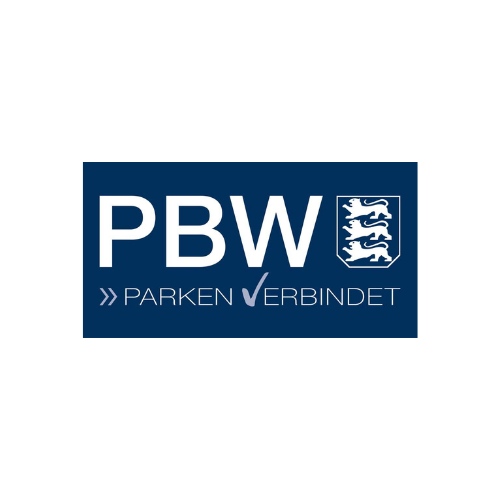As the parking industry catches up to retail with a new generation of smart parking solutions, customer relationships and email marketing become ever more relevant. In a sector where the product is location-specific, parking operators can maximise the impact of email with up-to-the-minute design trends. Email becomes a showcase for market-leading service, capturing the attention of today’s digitally conscious consumer.
Email marketing has long been an effective way to drive revenue, brand awareness and customer loyalty. Used with CRM systems, it builds lasting customer relationships. And with the number of email users worldwide forecast to reach 4 billion by 2020, rising to 4.3 billion by 2023, the potential audience is vast.
Remember though, your customer receives a significant number of emails. In 2019, there are around 293.6 billion emails sent every day, and this figure is expected to rise to over 347.3 billion by 2023. It’s also useful to understand that of this massive volume of communication, a whopping 55% of all emails are spam. This statistic really underlines how important the look and content of your email is if you want to be taken seriously.
You need to stand out
Emails that are well designed and informative are key to guiding your customer’s journey through the conversion funnel from the active evaluation stage – the point at which the customer is researching possible suppliers, normally using Internet searches to pull information to them – through moment of purchase and beyond.
So what are the trends for email design in 2020, and how can your parking company apply them?
Email design trends for 2020
Email design has come a long way in recent years. The new drag-and-drop type editor that comes with integrated marketing solutions like Rezcomm makes it straightforward for parking companies to send out professional, attractive, brand-matched html emails.
But with new design functionality, emails are becoming ‘mailable microsites’ that make it unnecessary for a customer to even visit your website or app. Personalisation and segmentation and use of dynamic content have reached new levels.
Customers are becoming used to assimilating more information from less content, as design becomes minimalistic and intuitive.
7 Quick Tips
1. Make specific sections shareable
Instead of using social media sharing buttons at the end of your email, add a social sharing icon to a quotable sentence in the body of your email, or to a statistic you want more people to know. If you have a special offer or a new service or update, make it shareable. This increases brand engagement and can help keep customers in the loyalty loop.
2. Customise the social media icons
As well as placing sharing buttons in new places, designers are changing the way the traditional social media icons look. Buttons can be designed to appeal to the reader’s emotions and motivations. For example the button can be shown to vibrate in an attention-catching way.
3. Choose the best colour for your CTA button
Any colours used in your email design should match with your brand. But visual hierarchy matters too. For example, red will always draw the eye better than green – hence all the notification badges used by Facebook are red. This doesn’t mean everything important in your design should be red, but do make sure the important stuff, particularly your call to action button, stands out. If the customer has been in the active evaluation stage and your email triggers the moment of purchase, don’t let a badly chosen colour make for an empty parking space.
4. Ask for feedback
One trend that has gained momentum in recent years is the technique of asking for feedback. Either prompt a response by asking a question, or ask the recipient to click on a check box if they found the email interesting. This is an easy way to gather reactions to your campaigns because it takes so little time for the reader to respond. And it’s another great way to engage customers in the loyalty loop and encourage repeat bookings.
Feedback can also come in the form of user generated content. If you can motivate your customers to share their experiences with your brand, it will pay dividends in terms of word-of-mouth marketing. Customers are three times more likely to think content is authentic if it is user generated than if it is designed by the brand. American brand GoPro is a great example of this, taking advantage of around 5,000 or more videos each day via its hashtag #GoPro. Using this momentum the brand became one of the leading channels on YouTube, simply by sharing its customers’ passion. While parking may be more a means to an end than a go-to activity, there’s always room for creativity when engaging customers with their experience of your brand.
5. Interactive emails
Interactive emails are engaging, fun to read and creative, and they’re becoming more common as we head into 2020. These emails allow users to interact with email elements without having to head to your website.
Emails can include sliders, quizzes, surveys or polls, search bars, image galleries, innovative use of buttons, rollover images and even an option to complete a purchase within the email. Interactive elements tie in with customer expectation about how various digital touchpoints should function, and they can be used to add value and engagement at all points in the customer journey.
6. Create and use your own icons
Replace numbered lists and bullet points with original icons. Icons are more attractive and interesting than traditional formatting, and they also support your content, providing snap illustrations of the ideas you are promoting, and offering a strongly memorable brand image.
7. Use illustrations
Use of illustrations and graphics in email is becoming widespread, creating a charming link between logo, illustration and type. These can be used to make emails more attractive and memorable, and to brand your business as customer friendly. For example, a smiling illustrated character in place of a dreary stock photo engages readers with content right from the start, creating a happy emotional response that helps build goodwill for your brand. Characterful illustrations are even being used to overhaul brand identities.
Building your emails
Use master templates
It is important to use a consistent, brand-matched email layout across all your marketing communications to establish and maintain brand consciousness. This means that whatever the content of your email, some portions of your email design will stay the same.
Integrated marketing software solutions like Rezcomm feature customisable, drag and drop templates for automated marketing campaigns.
These can be used to create master templates, where the common elements of each email are replicated, making the design of new campaigns consistent, easier and faster.
Add dynamic content
Email templates also allow the inclusion of a dynamic content block. A dynamic content block is a section of the email where the content will change depending on a defined customer persona. Dynamic content marketing adds a depth of personalisation to your content. The email each customer receives is customised in a unique way, depending on the individual’s purchase history, engagement, location, vehicle type, age and gender.
Minimalistic design
A study by Microsoft, published in Time Magazine under the heading, You Now Have a Shorter Attention Span Than a Goldfish, found that the average attention span has dropped from 12 seconds to 8 seconds since the year 2000 (the start of the mobile revolution).
For email marketers, this means there’s an 8 second window to capture the imagination of a prospective customer. Add to this the fact that Apple has moved the ‘unsubscribe’ option to the top of all emails sent to a mailing list, and it becomes even more urgent to capture the customer’s attention.
Of course, the pre-header text and subject lines are still important, but the design of the email must provide information in a flow that guides the subscriber’s eye away from the unsubscribe ribbon.
Designers in 2019 favoured minimalist design, and it looks like it’s here to stay. In fact, while it was previously equated with luxury brands, minimalism has become mainstream because of its power in conveying information. It uses white space to encourage a greater eye-scan pattern, making emails easier to absorb, and it looks smart, up-to-date and professional.
Explore the new semi-flat designs
Semi-flat design has developed from the trend for flat design. Flat design is minimalistic, emphasising usability. It features clean, open space, crisp edges, bright, primary colours and two-dimensional illustrations – think Windows 10’s app home screen.
New semi-flat styles feature a 3D look with areas of colour and light, and soft shadows for depth.
Minimalistic design styles use bright, contrasting colours to make icons stand out. Simple illustrations are used to convey information fast.
Big is beautiful
Even though most people tend to scan email headings, subheads and calls to action, the body text is often key to securing a message or story. To encourage recipients to read the body copy, designers are using larger fonts. It’s still sensible to keep this copy minimal in length, but the traditional 12 pt, a hangover from print, is being replaced with text of 16 pt or more, suitable for the bright lights and small screen of mobiles and tablets. Remember, legibility is not always the same as readability. Make sure your typeface and line height read well at a larger size.
Using GIFs
The Graphics Interchange Format, or GIF (pronounced Jif, according to its inventor, Steve Wilhite) is the social media chat language of choice for millennials. GIFs offer an easy, often funny way to express a thought or feeling whilst referencing popular culture.
The GIF also provides an amazing opportunity for email marketers, capturing the attention of readers in a way that static images can not. Cheaper than video and better than images, GIFs facilitate accessible visual storytelling. And for viewing purposes, they are relatively small files, making them mobile-friendly.
Computer Technology Company, Dell saw impressive results from its first GIF-centred email campaign. The firm measured a 6% increase in open rate, 42% more clicks, and increases in conversion and revenue of more than 100%.
Remember – GIFs should be used sparingly and appropriately, so as to enhance not detract from your content. Don’t give your reader a headache!
Animation
Email campaigns have featured GIFs since 2016. Now it’s time for more sophisticated animation: Cinemagraphs, keyframe animations and live backgrounds.
- Cinemagraphs are still images in which a minor and repeated movement occurs, forming a video clip. These are published as an animated GIF or in other video formats, but are smoother than GIFs, and can give the illusion that the viewer is watching an animation. They are actually quite different from GIFs. A GIF is a low quality image, limited to 256 colours, and may take only minutes to make. A cinemagraph is high quality, can consist of millions of colours, and can take a couple of hours to produce. Think of it like a high definition GIF. Cinemagraphs are useful for grabbing the reader’s attention by drawing their eyes to the moving parts of the image. This makes them ideal for promoting specific products.
- As already mentioned, GIFs, as a mid-point between static image and animation, tend to be choppy and abrupt. Keyframe animation, which is supported by Apple and Android devices, offers smoother animation. Hover effects and linear and parallel movement within the email make it really eye-catching.
- Live Backgrounds also represent a huge leap in email design. These backgrounds change with time or incorporate a video playing behind the email. From a design perspective, these visually stunning emails require zero error rendering to ensure an unbroken user experience.
An end for responsive design?
Many new devices, even mobile phones, come equipped with 2K and even 4K resolutions, so the native email client will render desktop layout in landscape orientation. Desktops with larger screens mean that emails no longer need to be coded to a width of 600 pixels. This eliminates the need to squeeze the main content in ‘above the fold’ on desktop, and the same content can be displayed horizontally on desktop and stacked vertically on mobile.
Email is one of the most valuable tools throughout the customer journey. But remember not every email client supports all of these design trends. Make sure your email is readable however it’s being received. You won’t win any points with your customers if you leave them feeling left out.
The main goal of email marketing is to engage customers into further communication with your parking brand. It’s important not to underestimate the visual component of email marketing, and to embrace interactive elements to keep your messaging fresh. Your audience is diverse, and your emails must be personalised for everyone, no matter what their device, email client or preferences may be.
Rezcomm offers the all-in-one solutions that take the guesswork out of ecommerce for parking companies. Our world-first combined omnichannel platform for sales, marketing and customer-centric analytics can help you build revenue and improve customer service. If you want to ask the experts about engaging your parking customers with email marketing, contact us for a chat today.




























